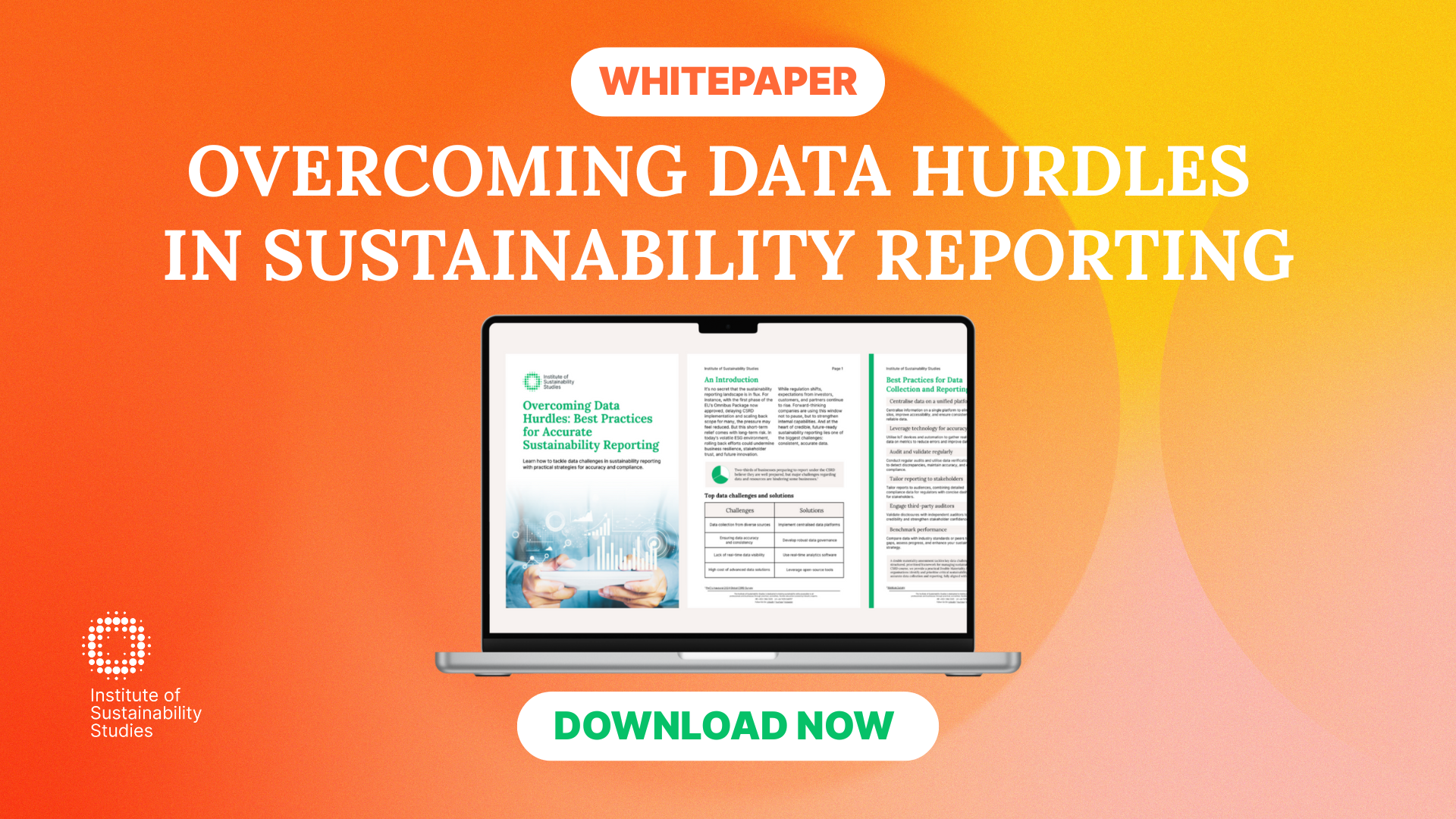Renewable energy sources are playing an increasingly pivotal role in the global shift towards sustainability management and green energy systems. By harnessing inexhaustible resources such as sunlight, wind, and water, renewable technologies are not only enhancing energy efficiency but also driving significant environmental and economic benefits.
Advances in solar photovoltaics, wind turbines, and bioenergy are leading to higher energy conversion efficiencies and reduced greenhouse gas emissions. Continue reading as we explore the impact of renewable energy on energy efficiency and sustainability and highlight recent innovations in wind, ocean, and bioenergy.
The impact of renewable energy sources on energy efficiency and sustainability
Renewable energy sources have a profound impact on energy efficiency and sustainability, reshaping the global energy landscape. By leveraging inexhaustible resources such as sunlight, wind, and water, renewable energy technologies significantly enhance energy efficiency. For instance, solar photovoltaic (PV) systems and wind turbines generate electricity closer to the point of consumption, reducing transmission and distribution losses that plague conventional power systems.
Advances in these technologies have led to higher energy conversion efficiencies, with modern solar panels achieving efficiencies of over 22%, up from about 15% a decade ago. This continuous improvement underscores the potential for renewables to deliver more power with less waste, directly enhancing energy efficiency. The sustainability benefits of renewable energy are equally compelling. Renewable sources produce little to no greenhouse gas emissions during operation, which is critical for mitigating climate change.
Replacing fossil fuel-based power plants with wind, solar, and other renewables can drastically cut carbon dioxide emissions, fostering a cleaner environment. Moreover, renewables rely on natural processes that are naturally replenishing, ensuring a sustainable energy supply. Unlike fossil fuels, which are finite and contribute to environmental degradation, renewable energy harnesses the power of natural cycles, making it an inherently sustainable option.
Beyond environmental advantages, renewable energy also bolsters energy security and economic resilience. By diversifying the energy mix, countries can reduce their dependence on imported fuels, enhancing their energy independence and stability. This diversification also buffers economies against global energy market fluctuations. Additionally, the renewable energy sector stimulates job creation and economic growth, driving innovation and new industry development.
Future-proof your skills in business sustainability with a globally-recognised, in-demand course curated by industry experts
Innovations and breakthroughs in renewable energy sources
Below are some innovations and breakthroughs in three different renewable energy sources – wind, ocean, and bioenergy.
Wind energy
One innovation in wind energy has been the development of floating offshore wind turbines. These turbines are anchored to the seabed using cables and can be placed in deeper waters where traditional turbines are not a feasible option.
Floating offshore wind turbines increase energy production efficiency since stronger and more consistent winds can be found further offshore. For instance, Hywind Scotland, the world’s first floating wind farm, has illustrated the viability of this technology with a greater capacity than traditional offshore wind farms.
Moving on from floating offshore wind turbines, we have also witnessed more advanced blade designs for wind turbines. The modern blades incorporate materials like carbon fibre to reduce weight and increase flexibility and strength.
Improved blade aerodynamics is having a direct positive impact on the performance and durability of wind turbines. This helps to reduce maintenance costs and increase the lifespan of the turbines.
Ocean energy
Oceans are the world’s largest untapped source of renewable energy and it is believed that by 2050, ocean energy can offer 10 percent of Europe’s current electricity demand. An impressive innovation in ocean energy has been the creation of tidal stream generators.
These underwater turbines harness the kinetic energy of tidal currents. They offer a reliable and predictable source of renewable energy due to the regularity of tidal cycles. The MeyGen Project in Scotland, one of the biggest tidal energy installations in the world, is demonstrating the potential of tidal stream technology at a commercial scale.
Wave energy is another type of ocean energy that captures the movement of ocean and sea waves and uses it to create electricity. A useful innovation we have witnessed in the area of wave energy has been wave energy converters.
Devices like oscillating water columns and point absorbers transform the energy from surface waves into electricity. These technologies are advancing with more efficient conversion mechanisms and energy capture, increasing energy yield and reducing costs.
Bioenergy
Bioenergy is a type of renewable energy created when we burn biomass fuel. Biomass fuels come from organic materials like purpose-grown crops, organic waste, and harvest residues. An innovation in bioenergy has been the creation of advanced biofuels. Second and third-generation biofuels are created from non-food biomass and algae, respectively.
These biofuels provide higher energy yields and lower greenhouse gas emissions compared to first-generation biofuels made from food crops. Another innovation has been biogas upgrading technologies.
New processes like membrane separation and pressure swing adsorption enhance the purity and efficiency of biogas upgrading. These technologies enhance the quality of biogas, making it suitable for injection into natural gas grids and use as vehicle fuel.
Future outlook and trends with renewable energy sources
The future of renewable energy is bright and with technological advancements, we can expect more innovation in the field. Below we reflect on this and share some predictions.
Advanced energy storage solutions
The development and deployment of advanced energy storage systems, such as lithium-ion batteries, solid-state batteries, and flow batteries. Enhanced energy storage capabilities will address the intermittent nature of renewable sources like solar and wind, ensuring a stable and reliable energy supply. Grid-scale battery storage projects, like Tesla’s Megapack installations, are expected to become more common, providing backup power and grid stability.
Green hydrogen production
Increased focus on producing hydrogen using renewable energy, known as green hydrogen. Green hydrogen can serve as a clean fuel for industries, transportation, and energy storage, playing a crucial role in decarbonising sectors that are hard to electrify. The European Union’s hydrogen strategy aims to install 40 GW of electrolysers by 2030, highlighting the growing investment in green hydrogen technology.
Integration of AI and big data
Utilisation of AI and big data analytics to optimise the performance and maintenance of renewable energy systems. AI can enhance predictive maintenance, improve energy output forecasting, and optimise grid integration, making renewable energy systems more efficient and cost-effective. AI-powered platforms like Google’s DeepMind are already being used to predict wind energy output, allowing for better integration into the energy grid.
Floating solar farms
Expansion of floating solar photovoltaic (FPV) systems on water bodies such as lakes, reservoirs, and coastal areas. Floating solar farms reduce land use conflicts, improve solar panel efficiency due to the cooling effect of water, and can be paired with hydropower plants for synergistic benefits. The largest floating solar farm, located in China’s Anhui province, demonstrates the potential scale and impact of this technology.
Offshore wind expansion
Significant growth in offshore wind energy projects, particularly in deep waters where floating wind turbines are deployed. Offshore wind farms can capture stronger and more consistent winds, leading to higher energy yields and contributing significantly to the renewable energy mix. The UK’s Dogger Bank Wind Farm, poised to be the largest in the world, exemplifies the rapid expansion and potential of offshore wind energy.
Upskill your teams with essential skills and insights to meet sustainability requirements with a fully online, self-paced, accredited course
Conclusion
The transformation towards renewable energy is reshaping the global energy landscape, offering substantial gains in energy efficiency and sustainability. Innovations such as floating offshore wind turbines, tidal stream generators, and advanced biofuels are setting new benchmarks for energy production and environmental stewardship.
As we look to the future, advancements in energy storage, green hydrogen production, AI integration, and floating solar farms are expected to drive further progress. Embracing these technologies not only ensures a cleaner environment but also bolsters energy security and stimulates economic growth.
Dedicated to harnessing the power of storytelling to raise awareness, demystify, and drive behavioural change, Bronagh works as the Communications & Content Manager at the Institute of Sustainability Studies. Alongside her work with ISS, Bronagh contributes articles to several news media publications on sustainability and mental health.
- Bronagh Loughlinhttps://instituteofsustainabilitystudies.com/insights/author/bronagh/
- Bronagh Loughlinhttps://instituteofsustainabilitystudies.com/insights/author/bronagh/
- Bronagh Loughlinhttps://instituteofsustainabilitystudies.com/insights/author/bronagh/
- Bronagh Loughlinhttps://instituteofsustainabilitystudies.com/insights/author/bronagh/









